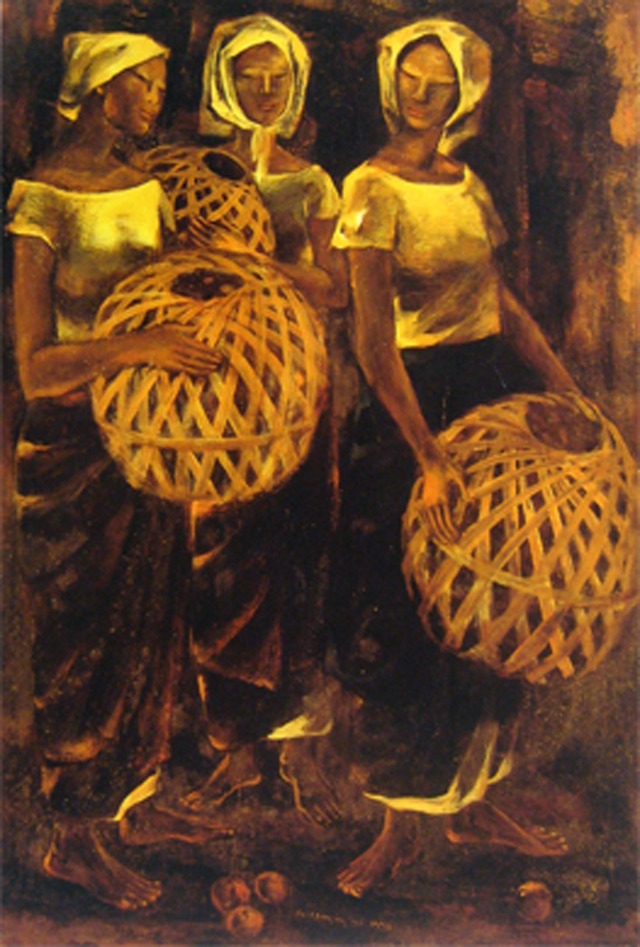Pioneering painter Anita Magsaysay-Ho passed away on Saturday—less than three weeks ahead of her 98th birthday on May 25. Known for her modernist flair in painting, Magsaysay-Ho depicted in her art ordinary Filipino women hard at work, either busy harvesting in farms, tending to their children, or feeding livestock and selling them in the market. She was the lone female to be included in an elite group of then rising artists who challenged conservative art styles in the Philippines in the 1950s. Among those in the group - informally known as the "Thirteen Moderns" - were Victorio Edades, Carlos Francisco, Galo Ocampo and Vicente Manansala.

Three Women with Baskets, Anita Magsaysay-Ho (b. 1914), 1970, Oil. According to the Yuchengco Museum, this painting "was made when the artist and her family settled in Canada in the late 1960s. She was partial to warm sienna tones for many of her oils. Her themes continued as before: barefoot women clad in long skirts and white blouses, white bandanas shrouding their heads." From the Collection of the Yuchengco Museum
She won second prize for "Five Senses" in the 1950 Manila Grand Opera House Exhibition; second prize for "Fish Vendors in the 1952 Second Watercolor Exhibition of Graphic Arts; and a number of other awards from the Art Association of the Philippines. According to her
biography published online by Geringer Art Ltd., her early works are said to show the influence of Fernando Amorsolo, and evolved toward modernism with cubist distortion and stylized visual rhythms. In the 1950s, she featured women at work. In this decade, her paintings had bold brushwork and contrasting dark and light tones. In the 1960s, her work was said to be more relaxed, with softer lines, appearing choreographed and graceful. Influenced by Chinese calligraphy, she explored a new style using inkblots in the 1970s, followed by a "Green Period" in the 1980s. Magsaysay-Ho studied Fine Arts at the University of the Philippines and Cranbrook Academy in Michigan. She also took courses in oil painting and drawing at the Art Student's League in New York City, where she met her husband Robert Ho. After their marriage, Ho established the shipping business Magsaysay Inc. The couple moved often, and lived in many different countries. Magsaysay-Ho became a Canadian citizen, thus becoming ineligible for the National Artist Award. Artist and gallery owner Rock Drilon says this is discrimination against women. "
Biktima siya nang patuloy na pag-discriminate nang ating batas sa ating mga kababaihan... bakit ganun? Si Edades ikinasal din sa foreigner. Hindi makatarungan," Drilon said in his Facebook post. It is somewhat ironic, as Magsaysay-Ho's paintings mostly featured Filipino women, he added. “In my works I always celebrate the women of the Philippines. I regard them with deep admiration and they continue to inspire me – their movements and gestures, their expressions of happiness and frustration; their diligence and shortcomings; their joy of living. I know very well the strength, hard work and quiet dignity of Philippine women, for I am one of them," Magsaysay-Ho is quoted in "In Praise of Women," her biography by Alfredo Roces, published in 2005. Her remains lie in state at the Santuario de San Antonio in Forbes Park, Makati City. Church personnel told GMA News Online that the artist's remains arrived at the church at 7:20 p.m. of Saturday.
— ELR/HS/LBG, GMA News 




